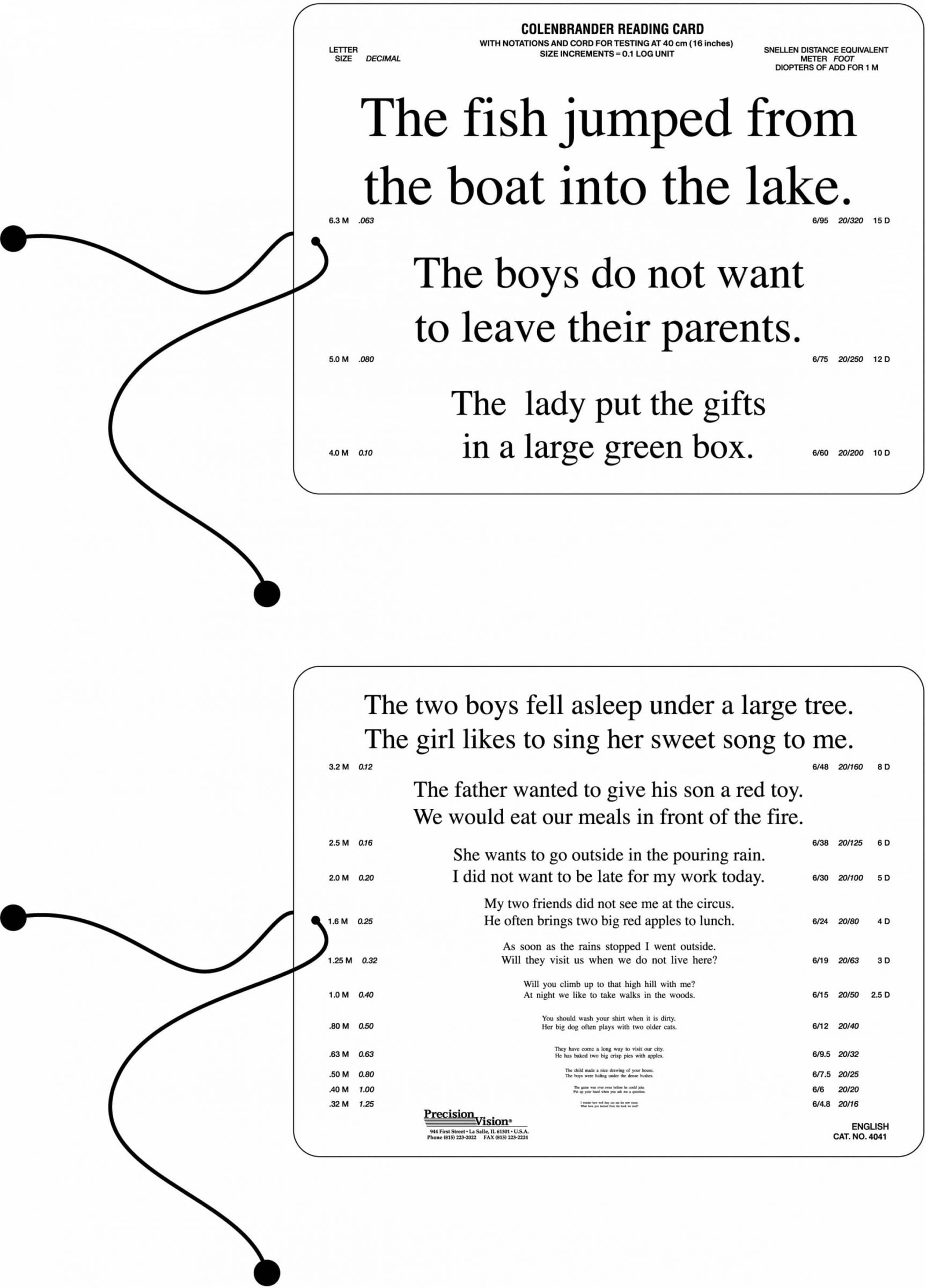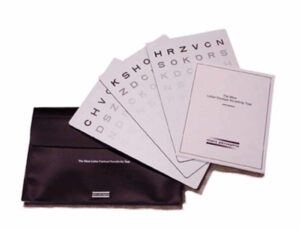Colenbrander Reading Card (Near Vision, Standard Contrast)
Continuous text cards simulate everyday tasks and activities that patients may encounter, such as reading the newspaper.
$28.75
Product Variations
Description
Mixed Contrast Reading Card – In Multiple Languages
Designed as a simple screen test. The usual question for a reading test is: What is the smallest (black) line you can read? On the contrast card one adds the question What is the smallest (grey) line you can read? The difference between the two measurements will be obvious and can simply be expressed in lines. Preliminary findings indicate a 2 or 3 line difference is normal.
Unrelated simple sentences at 4th grade level.
Serves as an educational tool to demonstrate the effect of contrast deficits to patients and family members.
Also Available in Spanish, Portuguese, German, Dutch , Finnish , Swedish , Italian, French, and Danish.
Continuous Text Mixed Contrast Near Vision Card – In Multiple Languages
Not time consuming (avg. read time: 45 sec.).
Unrelated simple sentences at 4th grade level.
Serves as an educational toll to demonstrate the effect on contrast deficits to patients and family members.
Near vision test features the mixture of acuity testing and 10% contrast sensitivity testing in one chart. Patients are tested for each simultaneously in a continuous text format. This format uses simple calibrated sentences which make testing easy and quick. This near point continuous text chart is also available in multiple languages including: English, Spanish, German, French, Portuguese, Finnish, Swedish, Italian, and Greek.
Continuous Text Near Vision Card – In Multiple Languages
Notations for commonly recommended testing standard of 40 cm (16 in.).
English reading card with sentences of equal length and difficulty.
Letter sizes from 6.3M to .32M in Times Roman Font.
Also Available in Spanish, Portuguese, German, Dutch , Finnish , Swedish , Italian , French, and Greek.
Continuous text cards simulate everyday tasks and activities that patients may encounter, such as reading the newspaper. This is important because it is the main part of everyday vision. Also, by testing with continuous text, doctors can establish a basis for prescriptions of magnification for corrective lenses. If everyday vision tasks are made easier, in turn the patient’s life can be easier.
Low Vision Reading Card – In Multiple Languages
LAYOUT
The card contains proportionally spaced reading segments in LogMAR on two sides. Side one increments ranging in size from 10m to 3m in Times Roman font. Side two features two charts From 4m to 0.6m, two sets are provided to avoid memorization. Each line contains the same number of letters and spaces. A diopter ruler is included.
READING ACUITY
Any patient who can read even one segment at any distance deserves a low vision evaluation.
Use of the diopter ruler allows a quick check of the reading distance against the reading add. It also allows verifying the reading acuity, using the modified Snellen formula: 1/V = M x D (M = letter size in M-units, D = viewing distand in diopters.) Examples: at 40 cm (2.5D) the 10m text represents 1/25 (20/500, 0.04), since 10m x 2.5D = 25. At 20cm (5D) 10m represents 1/50 (20/1000, 0.02), since 10m x 5D = 50. At 40cm (2.5D) the smalles print (0.06) represents 1/16 (20/32, 0.32), since 0.6m x 2.5D = 1.6.
READING FLUENCY
Since all lines have the same length, reading performance can be times to determine the level of magnification that will give optimum performance.
———-





